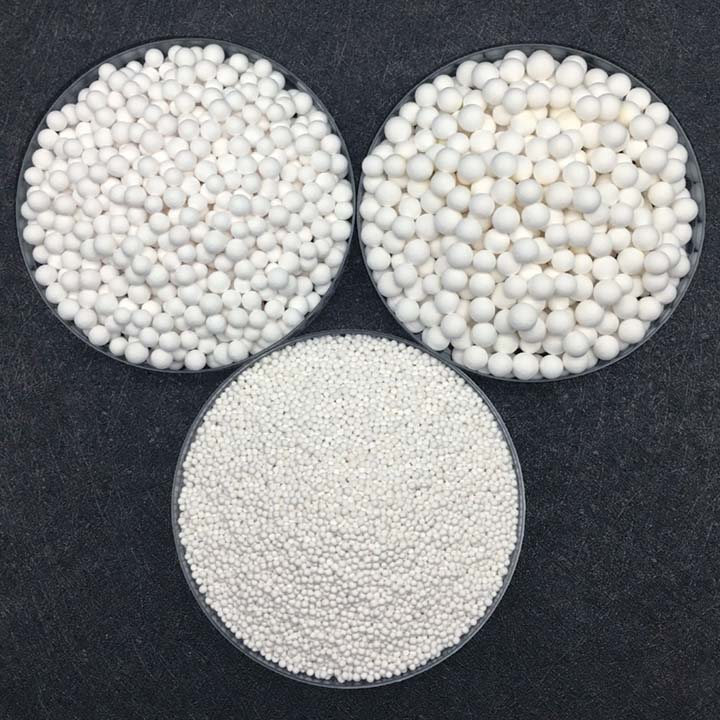What is the adsorption and defluorination performance of
activated alumina? What is its pH?
As a commonly used defluorination adsorbent, it has specific defluorination properties. It is well known that excessive or insufficient intake of fluoride will have adverse effects on human health. The groundwater and industrial waste water with excessive fluoride should be treated to meet the requirements of the "Drinking Water Sanitation Standard" or the industrial waste water discharge standard before they can be used or discharged. At present, the treatment of high fluoride water mainly includes adsorption, electrodialysis, precipitation, electrodialysis, reverse osmosis, ion exchange and other methods. Among them, due to simple operation and low cost, more ideal and more suitable separation methods are often used to treat low-concentration fluorine-containing water.
The defluorination of activated alumina balls is similar to that of anion exchange resins, but the selectivity of fluoride ions is greater than that of anion resins. Activated alumina has good adsorption and defluorination effect, stable capacity, and activated alumina absorbs 6400 grams of fluorine per cubic meter. This product has high strength, low wear, no softening, no swelling, no pulverization, and no cracking in water. Activated alumina balls can be widely used for deep drying of petroleum cracking gas, ethylene propylene gas and hydrogen production, drying of air separation plants, instrument air dryers, and fluoride treatment in hydrogen peroxide. It can also remove sulfur gas hydrogen, sulfur dioxide and hydrogen fluoride in waste gas. , hydrocarbons and other pollutants, suitable for the defluorination treatment of fluorinated water. It can be used as adsorbent, desiccant and catalyst.
Activated alumina defluorination has the advantages of high efficiency, specific defluorination characteristics, simplicity and ease of operation, and is therefore widely used. Using 2-4 mm granular activated alumina as the adsorbent, the addition amount, adsorption time, raw water concentration, raw water pH, coexisting anions, filler height, filtration speed, etc. The effect of adsorption efficiency aims to provide a theoretical basis for the treatment of fluorinated groundwater and industrial fluoride-containing waste water, and to provide a reference for the design and operation of the actual fluoride removal process.
